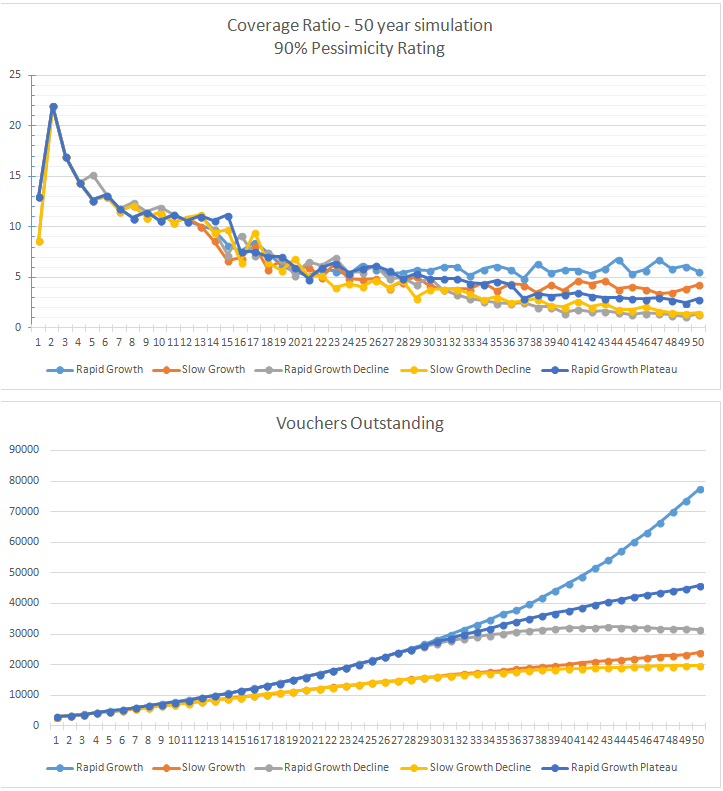The End of Non-Directed Living Kidney Donation: The National Kidney Registry’s Family Voucher Program
1Georgetown Transplant Institute, Washington, DC, 2East Carolina University, Greenville, NC, 3Cleveland Clinic, Cleveland, OH, 4National Kidney Registry, New York, NY, 5UCLA, Los Angeles, CA
Meeting: 2019 American Transplant Congress
Abstract number: 508
Keywords: Donation, Kidney transplantation, Patient education, Prediction models
Session Information
Session Name: Concurrent Session: Kidney Paired Exchange
Session Type: Concurrent Session
Date: Tuesday, June 4, 2019
Session Time: 2:30pm-4:00pm
 Presentation Time: 2:30pm-2:42pm
Presentation Time: 2:30pm-2:42pm
Location: Room 206
*Purpose: The continued growth of the National Kidney Registry’s (NKR) Voucher program has extended Kidney Paired Donation (KPD) to include chronological incompatibility which is facilitating more living donor transplants. To date, the Voucher program has limited Voucher holders to patients with prior transplants or renal function impairment. Expansion of the Voucher program will be to provide Vouchers to immediate family members such as a spouse and children.
*Methods: To ensure the availability of kidneys to provide for all future Voucher redemptions we utilized Monte Carlo simulations to test the rates relative to the kidneys available for redemption over a 50 year time horizon. The model developed for this study estimates Voucher redemptions based on probability distributions for various factors such as kidney failure and death rate by age from causes other than renal failure. Data used to develop these probability distributions were derived from SRTR data on live donor transplant results.
*Results: 5 scenarios were simulated. Rapid Growth (1) is a scenario where the rate of Voucher donors grows rapidly at a constant rate over 50 years. Slow Growth (2) is a scenario where the rate of Voucher donor grows slowly at a constant rate over 50 years. Rapid Growth, then Rapid Decline (3) is the worst case scenario where Voucher donors grow rapidly for the first 20 years, then decline rapidly for the next 30 years. Slow Growth, then Slow Decline (4) assumes Voucher donors grow slowly for the first 20 years, and then decline slowly for the next 30 years. Lastly, Rapid Growth, then Plateau (5) is a scenario where the rate of Voucher donors grows each year for the first 20 years, then remains constant for the next 30 years. In all 5 simulations, the coverage ratio never dipped below 1.13. This indicates that there will be more chain starts than chains needed for Voucher redemptions.
*Conclusions: This study demonstrates that an expansion of the NKR’s Advanced Donation Program to include up to 5 Vouchers for immediate family members can be easily accommodated. Fifty year simulations using actual ESRD probabilities assigned to each of the categories of potential Voucher holders establish that there will be at least twice as many kidneys available for Voucher redemptions than are required in all scenarios modeled. This new program challenges the standard definition of a Non-Directed Donor when the opportunity for a Family Voucher may be available.
To cite this abstract in AMA style:
Cooper M, Leeser D, Flechner S, Verbesey J, Ronin M, Hil G, Waterman A, Veale J. The End of Non-Directed Living Kidney Donation: The National Kidney Registry’s Family Voucher Program [abstract]. Am J Transplant. 2019; 19 (suppl 3). https://atcmeetingabstracts.com/abstract/the-end-of-non-directed-living-kidney-donation-the-national-kidney-registrys-family-voucher-program/. Accessed December 21, 2025.« Back to 2019 American Transplant Congress

